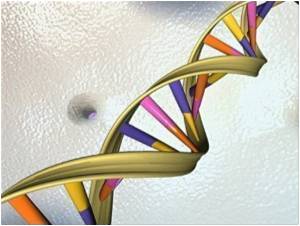A compound that restores the capacity to form new memories in aging rats, likely by improving the survival of newborn neurons in the brain's memory hub, scientists have discovered.

"This neuroprotective compound, called P7C3, holds special promise because of its medication-friendly properties," explained Steven McKnight, Ph.D., who co-led the research with Andrew Pieper, M.D., Ph.D., both of University of Texas Southwestern Medical Center, Dallas. "It can be taken orally, crosses the blood-brain barrier with long-lasting effects, and is safely tolerated by mice during many stages of development."
The researchers report on their findings July 9, 2010 in the journal Cell. Their work was funded, in part, by the NIH's National Institute of Mental Health (NIMH), a NIH Director's Pioneer Award funded through the Common Fund and managed by the National Institute of General Medical Sciences, and National Cancer Institute.
"This striking demonstration of a treatment that stems age-related cognitive decline in living animals points the way to potential development of the first cures that will address the core illness process in Alzheimer's disease," said NIMH Director Thomas Insel, M.D.
Source-Eurekalert









